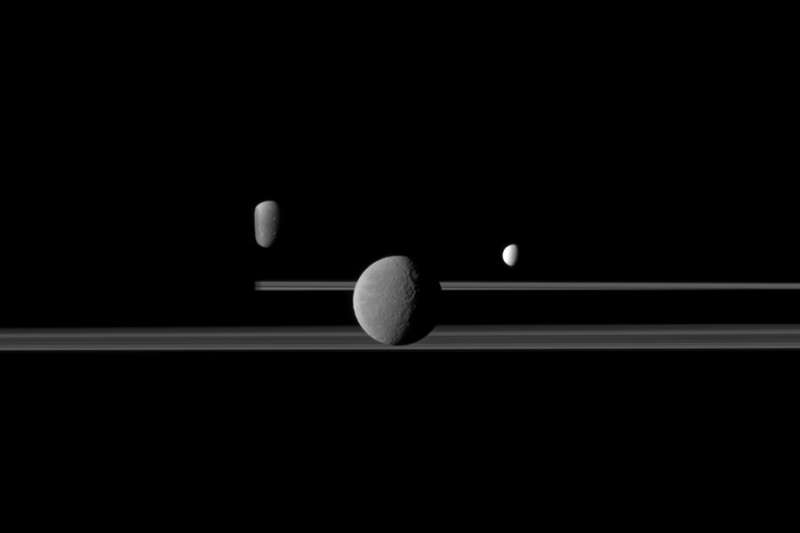Explanation: Orbiting in the plane of Saturn's rings, Saturnian moons have a perpetual ringside view of the gas giant planet. Of course, while passing near the ring plane the Cassini spacecraft also shares their stunning perspective. The thin rings themselves slice across the middle of this Cassini snapshot from April 2011. The scene looks toward the dark night side of Saturn, in the frame at the left, and the still sunlit side of the rings from just above the ringplane. Centered, over 1,500 kilometers across, Rhea is Saturn's second largest moon and is closest to the spacecraft, around 2.2 million kilometers away. To Rhea's right, shiny, 500 kilometer diameter Enceladus is about 3 million kilometers distant. Dione, 1,100 miles wide, is 3.1 million miles from Cassini's camera on the left, partly blocked by Saturn's night side.
1999 2000 2001 2002 2003 2004 2005 2006 2007 2008 2009 2010 2011 2012 2013 2014 2015 2016 2017 2018 2019 2020 2021 2022 2023 2024 2025 |
Yanvar' Fevral' Mart Aprel' Mai Iyun' Iyul' Avgust Sentyabr' Oktyabr' Noyabr' Dekabr' |
NASA Web Site Statements, Warnings, and Disclaimers
NASA Official: Jay Norris. Specific rights apply.
A service of: LHEA at NASA / GSFC
& Michigan Tech. U.
|
Publikacii s klyuchevymi slovami:
rings - Rhea - Dione - Enceladus - Saturn - sputniki Saturna - Reya - Encelad - Diona - kol'ca Saturna
Publikacii so slovami: rings - Rhea - Dione - Enceladus - Saturn - sputniki Saturna - Reya - Encelad - Diona - kol'ca Saturna | |
Sm. takzhe:
Vse publikacii na tu zhe temu >> | |
